One-off vehicle
In the field of vehicles authorized to drive, a one-off vehicle is a vehicle that was manufactured only once. The production of unique vehicles is reduced to one unit in each case. The easiest cases to analyze are those of cars and motorcycles. Unique automobiles and unique motorcycles are usually kept and displayed in museums. Aeronautical vehicles, with notable exceptions, are not preserved in the same way (due to accidents and disappearances). Naval vehicles feature a myriad of unique models. A non-exclusive base of examples could be the field of sailing and motor yachts.

.jpg.webp)
Some cases of non-legalized vehicles may be included in this article if they have particularly noticeable characteristics (engine, chassis, body, etc..).
Origin of one-off
A one-off is something made or occurring only once, independent of any pattern.[1] First used in 1934,[2] this term is employed to differentiate singular items from those in a series: e.g. "the Lincoln Futura was a one-off". It has been suggested that it is a misspelling of "one-of", but this etymology is not supported by sources such as the Oxford English Dictionary.[3]
Cars
Before mass production, automobiles were handcrafted. First the whole car and then only the body on a factory-provided chassis. There are many unique specimens of that time. Many customers made the car custom-made. Of that mass of unique cars it is only good to expose a few. Those that, besides being in a museum, have some remarkable features.
Alfa Romeo 40-60 HP Castagna

The house A.L.F.A. Manufactured a 40/60 designated street car. Designed by engineer Giuseppe Merosi, it had a 4-cylinder in-line engine (with camshaft and cylinder head) and provided 70 hp (52 kW) with a top speed of 125 km / h. In the racing version, the power reached 73 hp (54 kW) and a speed of 137 km / h.
In 1914 the Milanese count Marco Ricotti commissioned an aerodynamic body to the specialized firm Castagna that allowed the speed of 140 km / h. This unique model was officially called "aerodynamics" and popularly was " Siluro Ricotti." [4][5]
1922. Doble steam cars
From 1922 the Double brothers built the C, D, R and F. Series models Virtually every unit was unique, with significant changes to the chassis, boiler, engine and body.
1924. Hispano Suiza "Tulipwood"
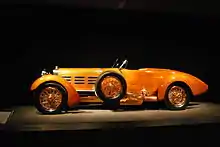
The extraordinary and well-honored Dubonnet (the heir to the snack maker Dubonnet) commissioned a racing car in Hispano Switzerland based on the Boulogne model. The bodywork was commissioned to Nieuport, an aircraft manufacturer. [6][7][8]
- Engine: 6 cylinders in line, 8 liters, 200 hp
- Chassis
- Bodywork: From Virginia tulip strips of wood tucked in with brass nails (some talking about rivets) on wooden notebooks. There are doubts about some technical details. There are sources that speak of the structural elements of fir. Other authors indicate an aluminum sub-body. The total weight would be 78 kg. [9]
Despite the luxurious appearance it was a race car. It was sixth on the Targa Florio and the fifth on the Florio Cup.
1927. Bugatti Type 41 Royale
1931. Hispano-Suiza J12.
This luxury car was stripped naked, with only the chassis and engine. All J12s were unique. The engine was V12 at 60 degrees. The engine block was machined from a 313 kg casting block. The crankshaft rotated on seven bearings. Each cylinder had two valves operated by rockers from a central camshaft. According to the designer, Mark Birkit, this solution (apparently less sophisticated than the camshafts in the cilinde head) was chosen as less noisy.
- In the movie Borsalino & Co you can admire a Hispano-Suiza J12. [10]
1938. Hispano-Suiza H6B Dubonnet Xenia
1938. Phantom Corsair
.jpg.webp)
The Phantom Corsair was built as a two-door [[Sedan (car) | sedan]) for six passengers. A futuristic body was mounted on a Cord 810 chassis. [11] This car was the result of a collaboration between young Rust Heinz (heir to the food industry tycoons Heinz) and the signing of bodywork Bohman & Schwartz. The mechanics of choice were the Cord 810 with a Lycoming V8 engine and front-wheel drive. [12]
- The cabin was very luxurious by design, imitating art deco
- Doors had no handles and were electrically opened. Among other instruments there was an altimeter and a magnetic compass. A set of optical pilots indicated if the doors were not locked properly or if the radio receiver was turned on. [13]
Manufacturing intentions were void of the death of promoter Rust Heinz in a car accident.
1939. Lagonda Rapide V12 Tulipwood Tourer
Motorcycles
1955. Guzzi Otto Cilindri

The engine was a water-cooled 500cc V8. Two camshafts (4 trees in total) driven by a cascade of toothed wheels. It offered a power of 78 hp (58 kW) at 12000 rpm and weighed 45 kg. It was designed by the engineer Giulio Carcano. The motorcycle broke the speed record with a speed of 280 km / h, a mark of would remain for 20 years. [17][18][19]
1991. Britten V1000

This New Zealand motorcycle with very unconventional solutions proved to be very competitive in racing. Apart from the initial prototype, ten units were built with noticeable differences.
Aircraft
1940. Grumman XF5F-1 Skyrocket.
Specially configured military twin-engine aircraft. [20]

Airships
1984. White Dwarf Airship
Boats
Most vessels are unique. Series, even small series, are a rarity. The present article presents only a random sample of vessels interesting for some concept.
1976. Bris II
Small yacht 5.90 m long designed and built by Sven Yrvind (inventor of Bris sextant). Sailboat and owner starred in numerous ocean crossings..[23]
.jpg.webp)
1990. The Maltese Falcon
It is a yacht 80 m long, 12.6 meters wide and a displacement of 1240 tons. The device is trimmed with three self-supporting shafts. The candles are raised (strictly 'unfolding') from the inside of the tree. The sail area is 2396 square meters.[24]
2005. Mega-iot Black Pearl
With a rigging similar to the Maltese Falcon, its length is 106.7 meters. The displacement is 2864 tons and the sail area is 2600 square meters. The candles incorporate solar cells.[25]
References
- Cordelia Hebblethwaite (27 September 2012). "Britishisms and the Britishisation of American English". BBC News Online.
- http://www.merriam-webster.com/dictionary/one-off
- New York Times: The Origins of ‘One-Off’, 2 July 2010
- Gian Luca Margheriti (30 July 2015). 101 tesori nascosti di Milano da vedere almeno una volta nella vita. Newton Compton Editori. pp. 389–. ISBN 978-88-541-8612-5.
- ALFA 40-60 HP Aerodynamics Castagna.
- White Elephantitis
- A Review of Wave Rotor Technology and its Applications
- Hispanic Switzerland H6 C Dubonnet 'Tulipwood' (1924). Kcslot logbook.
- 1934 Hispano-Swiss J12 Ville coupe
- Matt Stone; Preston Lerner (5 November 2012). History's Greatest Automotive Mysteries, Myths, and Rumors Revealed: James Dean's Killer Porsche, NASCAR's Fastest Monkey, Bonnie and Clyde's Getaway Car, and More. Motorbooks. pp. 321–. ISBN 978-1-61058-659-7.
- Carfolio.com/Phanyom Corsair Specifications.
- 1938 Phantom Corsair.
- 1939-Lagonda Rapide V12 Tulipwood Ttourer
- Carlos Viniegra (27 June 2018). Amos, lacayos y vasallos: Por qué el autoritarismo persiste en el siglo XXI y como enfrentarlo. Self Published Ink. pp. 249–. ISBN 978-607-8535-48-4.
- Ian Norris (December 2006). Automobile Year 2006/07. Automobile Year. pp. 248–. ISBN 978-2-916206-04-2.
- DK (2 April 2012). The Motorbike Book: The Definitive Visual History. Dorling Kindersley Limited. pp. 59–. ISBN 978-1-4093-7885-3.
- Ian Falloon (30 June 2007). The Moto Guzzi Sport & Le Mans Bible. Veloce Publishing Ltd. pp. 1–. ISBN 978-1-84584-064-8.
- Guzzi 8 cilindri GP 500 story.
- Grumman XF5F-1 Skyrocket
- Robert J. Rechs (1 November 1998). An Introduction to Muscle Powered Ultra-light Gas Blimps. Marc de Piolenc. pp. 149–. ISBN 978-0-937568-30-9.
- Hearst Magazines (January 1985). Popular Mechanics. Hearst Magazines. pp. 62–.
- WELCOME TO YRVIND´S WEBSITE
- Maltese Falcon
- Video: Black Pearl

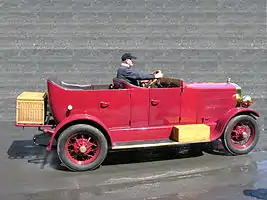
_Coup%C3%A9_Napoleon.jpg.webp)



.jpg.webp)
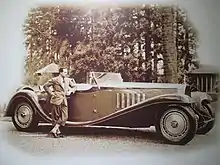

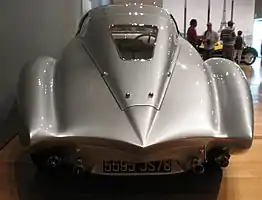
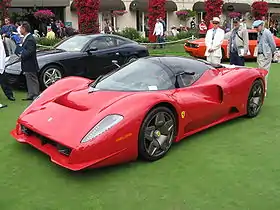
.jpg.webp)
.jpg.webp)